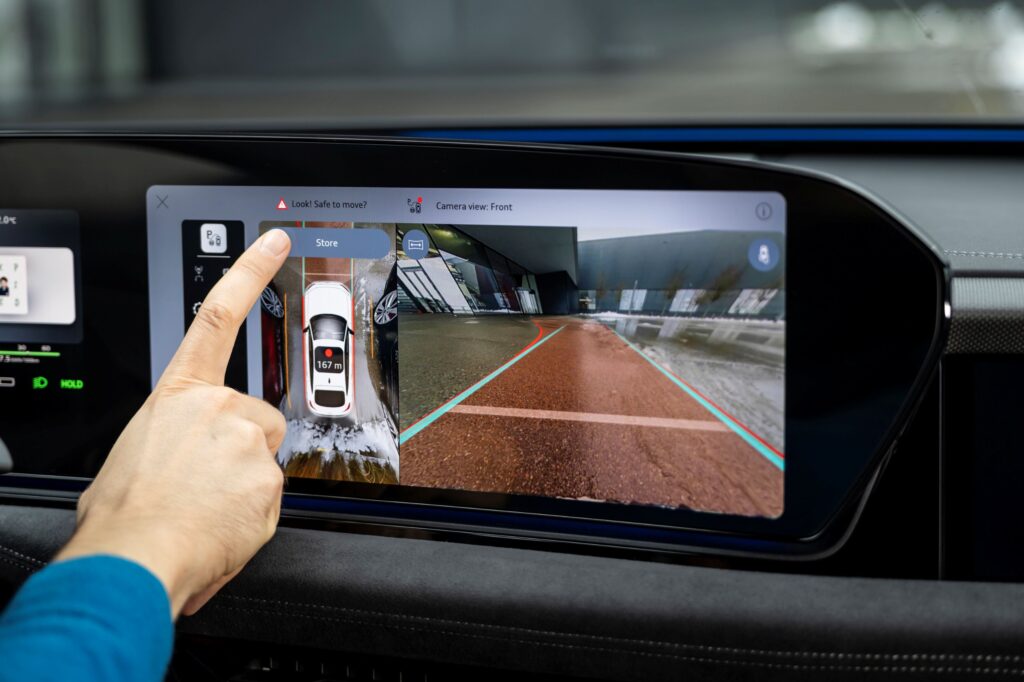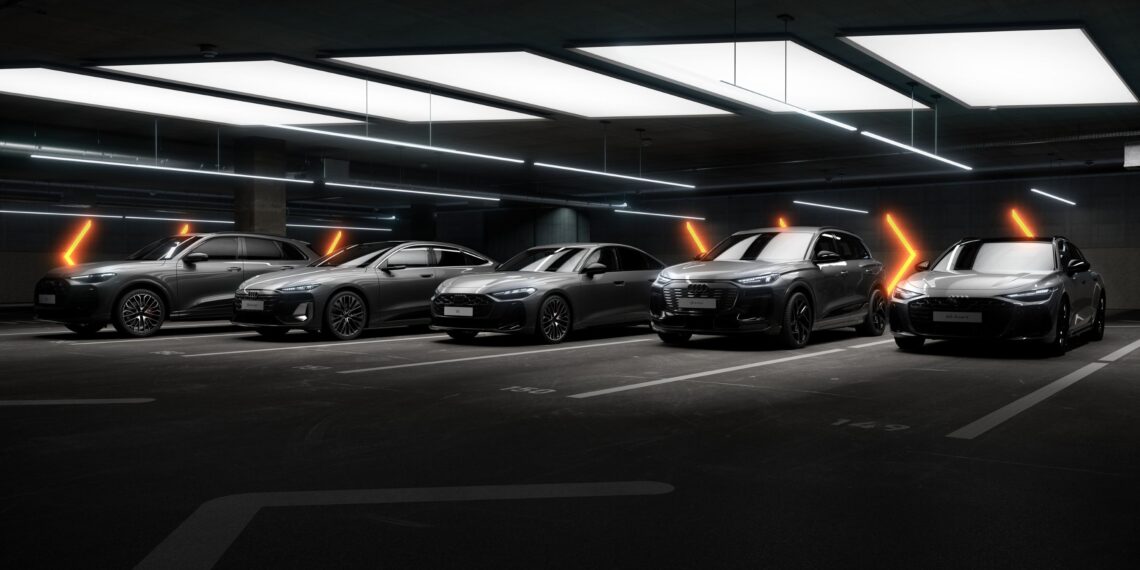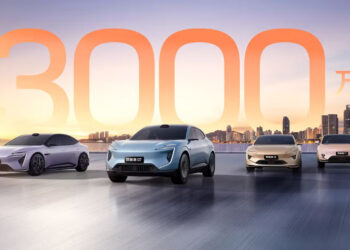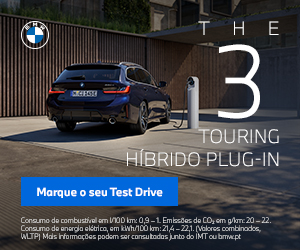All Audi models produced from the beginning of 2026, based on the two “premium” platforms of the VW Group (Premium Platform Electric for fully electric vehicles, and Premium Platform Combustion for those still equipped with a combustion engine) will receive a significant set of hardware and software updates. This means they will feature various new functionalities across no less than five ranges: A5, A6, Q5, A6 e-tron, and Q6 e-tron – with the 100% electric SUV also potentially benefiting from a power increase, available through the brand’s Functions Store, accessible from the myAudi app (it has not yet been specified how much the power will increase and how much this increase will cost). The goal is to make the driving experience even more emotional, intuitive, and efficient, emphasizing Geoffrey Bouquot, Chief Technical Officer of the four rings, who stated that “these innovations impressively demonstrate the future viability of the PPE platform for electric models and the PPC platform for combustion engine vehicles.”
In detail, starting with the S5 and S6 e-tron, a new driving mode called dynamic plus will be made available, specifically developed to predominantly send more power to the rear axle, in order to enhance the sporty behavior. In the S5 (PPC platform), this is possible thanks to the active power distribution carried out by the electronic quattro sport locking differential included as standard; while in the S6 e-tron (PPE platform), this task will be managed by the electronic control of the electric quattro all-wheel drive system – in both cases, in combination with the torque vectoring system.
At the same time, when the dynamic plus driving mode is selected, the sport mode of the active electronic stability control is automatically activated (which allows for more pronounced rear drifts, but only up to a certain limit). Similarly, the digital instrument panel and the head-up display also automatically adopt their sportier viewing mode – in the S5, a central tachometer appears, with a warning light for gear shifting and an indicator of the engaged gear; in the S6 e-tron, a power meter is displayed.

The manufacturer from Ingolstadt is also working to enhance the efficiency of the models based on the PPE platform, which, starting next year, will feature an improved regenerative braking system that decelerates to a complete stop without resorting to conventional brakes, which will not only make driving more comfortable but will also help improve range by converting a greater amount of kinetic energy into electricity, which is then stored in the battery.
For the A6, one of the biggest innovations is the availability of digital LED matrix headlights with micro-LED technology. In addition to providing better illumination, they also offer a high degree of customization, adaptive lighting functions, and high resolution: the orientation light on the roadway helps maintain the vehicle’s position on the road, projecting a symbol in the shape of an arrow on the road if the vehicle unintentionally deviates from its path; in slippery road conditions, an ice symbol is projected to alert the driver; and a marking light draws attention to people in the immediate vicinity of the road, illuminating them. Additionally, the LED matrix headlights can display one of three dynamic projections, selectable by the user, when entering and exiting the vehicle; the daytime running lights, composed of 48 LED segments per headlight, are capable of generating eight different digital light signatures, selectable through the MMI infotainment system; and the digital OLED 2.0 taillights, with 198 segments each, also change their appearance.

Within the five revamped ranges, the spotlight first falls on the new multifunction steering wheel; the replacement of some of the touch controls previously present in the virtual cockpit with physical controls (which are joined in the Audi A6 with a combustion engine by the new, more enveloping front seats, offering superior lateral support); and the introduction of the new infotainment system interface already known from the Q3, which allows for the selection of three modes for the Audi virtual cockpit (classic circular instrument panel, navigation view, or integrated driver assistance screen). The integration of smartphones has also been optimized, allowing navigation, multimedia, and phone functions to be mirrored not only on the central touchscreen but also on the digital instrument panel and the front passenger screen.
The voice assistant with self-learning capabilities, Audi assistant, has also been updated, thanks to the introduction of new functions based on artificial intelligence and the integration of ChatGPT. It is now possible to find destinations and entertainment content using vague descriptions; or to use voice commands to operate various driving assistance systems, such as adaptive cruise assist and distance control. Furthermore, the system will be capable of recognizing behavioral patterns and automatically adopting them as routines, such as activating adaptive cruise assist on the highway, or raising the vehicle with the lift function when entering a garage, crossing a level crossing, or needing to ascend a higher curb.
Baptized as “experience worlds,” the new personalized environment modes Activating, Relaxing, and Harmonizing make use of interior lighting, sound system, massage functions, and climate control settings to create an atmosphere on board according to their designation and purpose. Once activated, they last between 10 and 20 minutes and dynamically adapt to the vehicle’s movements during driving. The 100% electric models will also offer the Power Nap mode, which creates a calm and restful atmosphere for short breaks, for example, during battery charging.
And since entertainment is also not forgotten, it will be even easier to play on board thanks to the Bluetooth connection of external controls, as well as wireless headphones, to enjoy the sound from the entertainment source without disturbing the driver or other passengers.
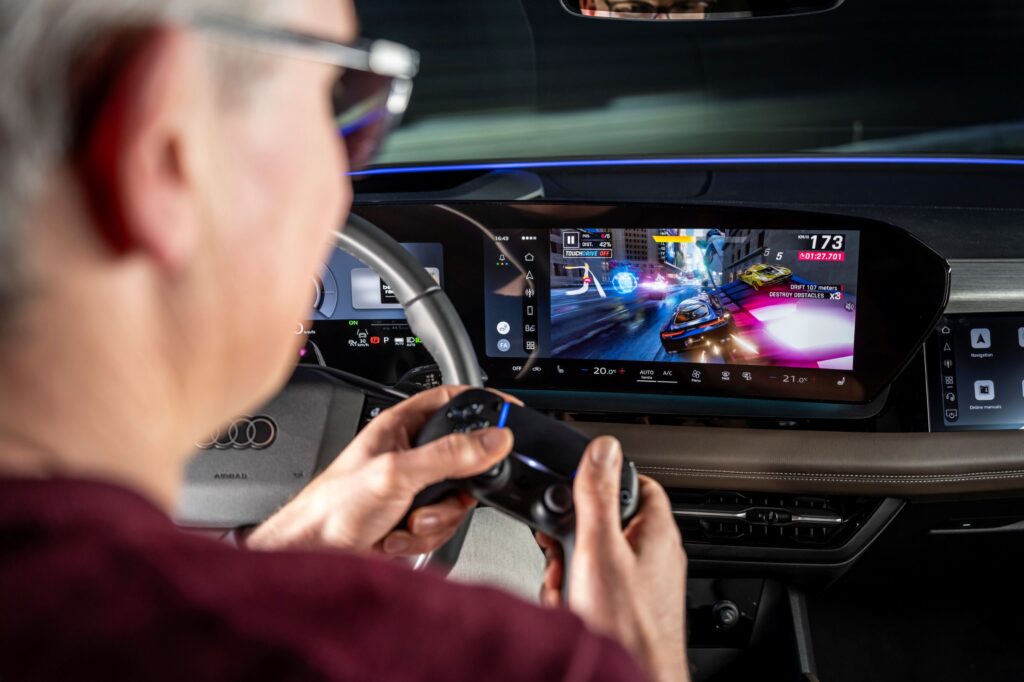
Available only in some markets (which have not yet been revealed), the latest evolution of the adaptive cruise assist not only keeps the vehicle in its lane but can also assist the driver in lane changes on the highway: whenever feasible, the person behind the wheel can initiate the assisted lane change by activating the turn signal, with the vehicle autonomously completing the rest of the maneuver. In urban traffic, thanks to traffic sign recognition, the vehicle is capable of adjusting its speed according to the signage; and recognizing stop signs, warnings of irregularities in the road surface, and priority rules, based on information stored in the route data, thus enabling it to automatically reduce speed when necessary.
Finally, the optional park assist pro parking aid system can take over the steering of the vehicle in the last 50 meters during reverse maneuvers, facilitating the execution thereof; among its other functionalities is the “recorded parking”: the system can save five different parking maneuvers, each up to 200 meters, and execute them completely autonomously on private property. When equipped with remote functionality, included in the Tech pro package, the park assist pro features a new garage parking function, operable via smartphone, which works even without the need to first pass by the parking space.
